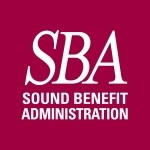Last month, the IRS issued new guidelines relating to Health Reimbursement Arrangements (HRAs). Starting 1/1/2020, employers will be able to offer three possible types of Health Reimbursement plans:
- A traditional Health Reimbursement Arrangement (HRA) that is integrated with the group medical plan (i.e. is attached to/connected to a group health medical plan and is compliant with the Affordable Care Act). The core elements of these plans are:
- An employer may reimburse out-of-pocket medical, dental and vision expenses.
- There is no limit to the amount of reimbursement (although we try to stay under $5,000 per individual simply to avoid the burdensome MSP reporting!).
- A new Individual Coverage Health Reimbursement Arrangement (ICHRA) plan (see last month’s article) that is NOT integrated with a group medical plan and allows employers to reimburse employees for individually owned insurance premiums as well as medical, dental and vision out-of-pocket expenses with no annual limit (avoid MSP reporting if the annual limit is below $5,000 per individual), and
- The new Excepted Benefit Health Reimbursement Arrangement (EBHRA) plan that is NOT integrated with a group medical plan and allows employers to reimburse employees for medical, dental and vision out-of-pocket expenses with an annual limit (this limit is set below $5,000 so no MSP reporting).
This article examines the EBHRA the core of which has created a new category of “excepted benefits” meaning it can be a standalone benefit not subject to the ACA mandates of a group health plan. Let’s first talk about what it is and how it works, then we’ll look at how it might be advantageous.
Requirements:
- An employer is required to offer a group medical plan to offer an EBHRA (this is the same requirement necessary to create eligibility to offer a Health FSA).
- There is an $1,800 annual limit for 2020 not including any carryover, if offered.
- Must be offered to all similarly situated (or class of) employees. For example, hourly and salaried employees might be two different groups of similarly-situated employees.
- A participant may enroll in the EBHRA without enrolling in the group medical plan. In this situation an employer offers the EBHRA to all full-time employees (similarly situated class of employees). Full-time employees who waived group medical coverage would be eligible for the EBHRA.
The EBHRA can reimburse:
- Out-of-pocket medical, dental or vision expenses. This is interesting because the traditional HRA has annual limits set by the employer in the plan design and, to be ACA compliant, must be integrated with the major medical plan in order to reimburse medical expenses. (You may recall that when the ACA passed, HRAs were in danger of non-compliance because they had caps and, under the ACA, a “medical plan” cannot have limitations on medical services. Then, the IRS passed a rule that said if an HRA were “integrated” with a medical plan, since the medical plan didn’t have limits, the HRA passed by association.) So, it is curious that the new EBHRA and ICHRA plans are standalone plans with annual limits (ICHRA limit is set by the employer based on plan design and the EBHRA is an annual indexed limit) and can also reimburse out-of-pocket medical expenses. How in the world did these two benefits manage to make it on the list of Excepted Benefits (i.e., not subject to the ACA rules)? But, who am I to question the whims of the IRS.
- Post-deductible expenses if offering an HSA-Qualified High Deductible Health Plan medical plan (in order to preserve HSA eligibility.)
- COBRA premiums (but not Medicare premiums) group health premiums or individually owned insurance premiums.
Other EBHRA rules:
- An employer cannot offer both an ICHRA and EBHRA to the same class of employees, but they can offer one or the other to different classes of employees.
- An employee, who is not in a class that is offered an EBHRA, cannot elect to participate in the EBHRA in lieu of waiving group medical coverage. Example: If hourly employees are offered the EBHRA and a salaried employee waives the group health coverage (maybe he is covered under a spouse’s plan), it does not make him eligible for the EBHRA because he is not an hourly-class employee.
How might the EBHRA benefit a benefit offering?
An EBHRA is useful for the employer that offers group health coverage to one class of employees but wants to help a different class of employees with a fixed benefit amount (the benefit cap can be less than the IRS maximum limit).
Further, it’s a richer benefit than a limited-purpose HRA which reimburses only dental and vision benefits. Now an employer can reimburse out-of-pocket medical expenses too.
For the employer who contributes to employee Health FSA accounts, they are limited to $500 per year or matching what the employee contributes. By contributing to an EBHRA instead an employer is allowed to contribute up to the EBHRA annual limits.
An employer that already offers other account-based plans (HSA, FSA or regular HRA) which reimburse only excepted benefits (ACA compliant), can “stack” this Excepted Benefit HRA on top of those plans.
Who won’t be interested in an EBHRA?
If an employer already has a limited-purpose HRA that reimburses dental and vision benefits, this EBHRA will not seem attractive as it has an annual limit and offers nothing new.
Likewise, if an employer already has a traditional HRA, integrated with the group medical plan reimbursing copays, deductibles and coinsurance with a higher limit set by the employer in the plan design, this EBHRA will also not seem attractive as it has a relatively low annual limit while not adding any new bells and whistles.
Lots of parentheses in this article; lots of definitions needed in order to read it! Lots to think about with the addition of these two new HRA benefits and how they might benefit our clients in the coming years… until something new pops up in alphabet soup!
